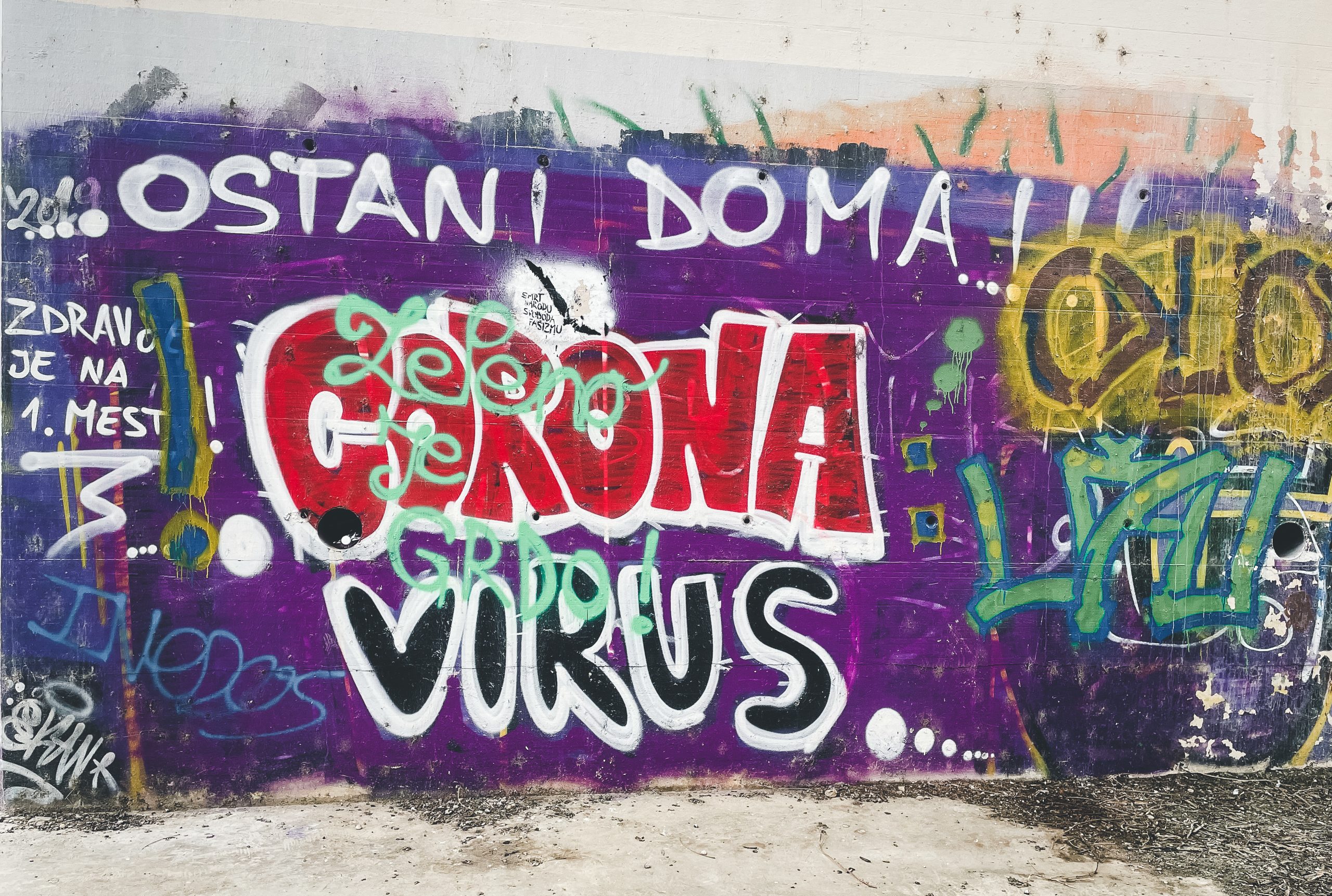
April 22, 2022, by Brigitte Nerlich
Covid metaphors: Three chapters and a special issue
When the pandemic began and I listened in to the chatter on the news, I started to think about the metaphors people used to talk about this devastating global event. I wrote quite a few blog posts on language, communication and metaphors. I also began various more academic activities which led to a special issue (see previous blog post) that I edited with a friend and three chapters I wrote for books edited by friends and colleagues.
One of these chapters appeared in a book edited by my German colleagues, Jure Leko and Werner Gephart (University of Bonn), focusing mostly on socio-legal issues and changes of societal norms brought about by the pandemic. My chapter (pp. 303-318), based on some of my earlier blog posts, falls a bit outside that focus and deals with early metaphors and visualisations of the coronavirus and Covid-19 under the title of “The Coronavirus and Covid-19: Verbal and Visual Metaphors”. If people want to read the chapter, I can send a pdf.
Another chapter has just been published as chapter 2 in a book entitled Being Human during Covid-19 edited by Paul Martin, Stevienna de Saille, Kirsty Liddiard and Warren Pearce (University of Sheffield). This edited collection deals with important questions, such as: How has the pandemic changed our understanding of what it means to be human? How has Covid exacerbated existing inequalities or created new divisions between different groups of humans? How might we rethink being human post-Covid and use these ideas for a more just, inclusive and sustainable society? My chapter is entitled “Pandemics, Metaphors and What It Means to Be Human” – and you can read the beginning of the chapter on Google books. The chapter examines the political use and misuse of metaphors during the early phase of the Covid-19 pandemic. Metaphors are indispensable for creating and expanding knowledge, but they can also twist and distort human understanding and the understanding of what it means to be human. During the pandemic, some leaders used metaphors of teamwork and collaboration to bring knowledge and people together, while others used metaphors of war and conflict to drive people apart and destroy shared understandings of what makes us all human. I argue that individual and community resilience can be enhanced by the former type of language use and undermined by the latter. Observing changes in metaphor patterns is (almost) as important as observing patterns in viral spread.
My third and final chapter on corona/covid metaphors will appear shortly as chapter 21 in a book edited by Shyam Wuppuluri and A. C. Grayling entitled: Metaphors and Analogies in Sciences and Humanities: Words and Worlds. This book is not all about covid, but focuses more generally on metaphors in many different areas of science and the humanities. My chapter is entitled “Metaphors in Times of a Global Pandemic” and here is the abstract: In 2020 the world changed, as SARS-CoV-2, a new coronavirus, swept through it. Millions of people died of COVID-19 and everybody had their lives severely restricted. People invented and learned a new scientific and also ordinary language, from antigens to zoom parties. One way of making sense of it all was through metaphors. In the face of Covid-19, governments, the media, and citizens tacitly and almost unconsciously relied on entrenched and well-structured networks of frames and metaphors to conceptualise problems and solutions, rooted in long-standing talk about ‘disease control’ and ‘fighting disease’. Such war talk was prominent across the globe in the early stages of the pandemic. However, over time, alternative frames and metaphors emerged, in particular in countries that focused more on care for people rather than control over the virus. This chapter examines some of the pervasive and some of the alternative metaphors used during the pandemic in 2020; how they were used by some to try and control the world we live in and by others to create a better world to live in. If you want to read the chapter, please contact me.
As Milan Kundera said in his 1984 book The Unbearable Lightness of Being: “Metaphors are dangerous, Metaphors are not to be trifled with. A single metaphor can give birth to love.” But metaphors can also give birth to hate. They can be used to stigmatise groups of people and they can be used to attribute blame and deflect responsibility. Metaphors are double-edged social, political and cognitive tools. They need to be used with care, especially in pandemic times.
Image: Jernej Furman Coronavirus graffiti on the wall
No comments yet, fill out a comment to be the first

Leave a Reply